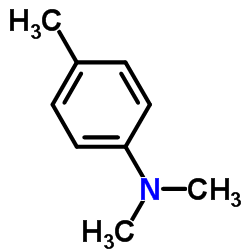Synthesis and characterization of cyclic acetal based degradable hydrogels.
Sachiko Kaihara, Shuichi Matsumura, John P Fisher
Index: Eur. J. Pharm. Biopharm. 68(1) , 67-73, (2008)
Full Text: HTML
Abstract
While many synthetic, hydrolytically degradable hydrogels have been developed for biomedical applications, there are only a few examples whose polymer backbone does not form acidic products upon degradation. In order to address this concern, we proposed to develop a hydrogel based on a cyclic acetal unit that produces diols and propanals upon hydrolytic degradation. In particular, we proposed the fabrication of hydrogels formed by the free radical polymerization of two diacrylate monomers, 5-ethyl-5-(hydroxymethyl)-beta,beta-dimethyl-1,3-dioxane-2-ethanol diacrylate (EHD), a cyclic acetal having two acryl groups, and poly(ethylene glycol)diacrylate (PEGDA). However, the hydrophobicity of the EHD monomer inhibits hydrogel fabrication. Therefore this work develops a strategy to form hydrogels with a co-monomer system, one of which is hydrophobic, and subsequently describes the properties of the resulting hydrogel. Using benzoyl peroxide as an initiator and N,N-dimethyl-p-toluidine as an accelerator, the EHD and PEGDA monomers were reacted in an acetone/water co-solvent system. The chemical structure of the resulting EH-PEG [5-ethyl-5-(hydroxymethyl)-beta,beta-dimethyl-1,3-dioxane-2-ethanol-co-PEG] hydrogel was then characterized by FT-IR. Physicochemical properties of the EH-PEG hydrogel, including swelling degree, sol fraction, and contact angle, were determined so as to characterize the properties of these materials and ultimately investigate their use in drug delivery and tissue engineering applications. Results showed that EH-PEG hydrogel may be formed using the co-solvent system. Further results indicated that swelling degree is dependent upon initiator concentration, monomer concentration, and molar ratios of monomers, while sol fraction significantly depended on initiator concentration and monomer concentration, only. These results demonstrate the ability to fabricate hydrogels using EHD and PEGDA system as well as to control the properties of the resulting hydrophilic networks.
Related Compounds
| Structure | Name/CAS No. | Molecular Formula | Articles |
|---|---|---|---|
 |
4,N,N-Trimethylaniline
CAS:99-97-8 |
C9H13N |
|
The novel semi-biodegradable interpenetrating polymer networ...
2015-01-01 [Acta Bioeng. Biomech. 17 , 13-22, (2015)] |
|
Novel bioactive polyester scaffolds prepared from unsaturate...
2014-12-01 [Mater. Sci. Eng. C. Mater. Biol. Appl. 45 , 64-71, (2014)] |
|
Pullulan/dextran/nHA macroporous composite beads for bone re...
2014-01-01 [PLoS ONE 9(10) , e110251, (2014)] |
|
CuCl2-catalyzed one-pot formation of tetrahydroquinolines fr...
2006-01-01 [Molecules 11(12) , 978-87, (2006)] |
|
Tuning emissive states in electrogenerated chemiluminescence...
2004-08-18 [J. Am. Chem. Soc. 126(32) , 10183-9, (2004)] |